Click on images to enlarge
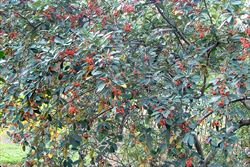
habit (Photo: Sheldon Navie)
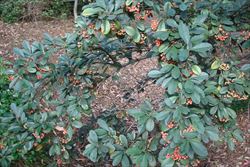
habit (Photo: Sheldon Navie)

leaves with narrow bases and indented veins (Photo: Sheldon Navie)
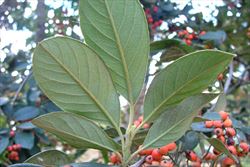
hairy undersides of older leaves (Photo: Sheldon Navie)
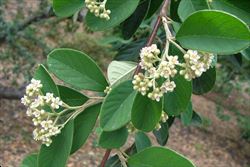
flower clusters (Photo: Sheldon Navie)
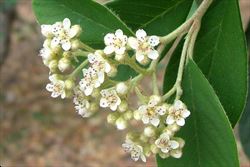
flowers (Photo: Sheldon Navie)
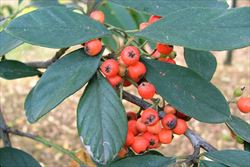
leaves and mature fruit (Photo: Sheldon Navie)

close-up of fruit (Photo: Sheldon Navie)
Scientific Name
Cotoneaster coriaceus Franch.
Synonyms
Cotoneaster lacteus W.W. Sm.
Family
Malaceae (New South Wales)Rosaceae (Queensland, the ACT, Victoria, Tasmania, South Australia and Western Australia)
Common Names
cotoneaster, late cotoneaster, milkflower cotoneaster, Parney cotoneaster, Parney's cotoneaster
Origin
Native to China.
Naturalised Distribution
Naturalised in some of the cooler regions of south-eastern and eastern Australia (i.e. in the sub-coastal districts of south-eastern Queensland, on the tablelands of northern New South Wales, in the ACT, and in south-eastern South Australia). Possibly also naturalised in Tasmania.
Naturalised overseas in western USA (i.e. Washington, Oregon and California).
Notes
This species is regarded as an environmental weed in New South Wales and the ACT, and as a potential environmental weed in Tasmania and Victoria. Like other cotoneasters (i.e. Cotoneaster spp.), it forms thickets under trees and displaces local native plant species.
Milk-flower cotoneaster (Cotoneaster coriaceus) is easily confused with large-leaved cotoneaster (Cotoneaster glaucophyllus), hence its distribution and abundance in Australia may be underestimated.

